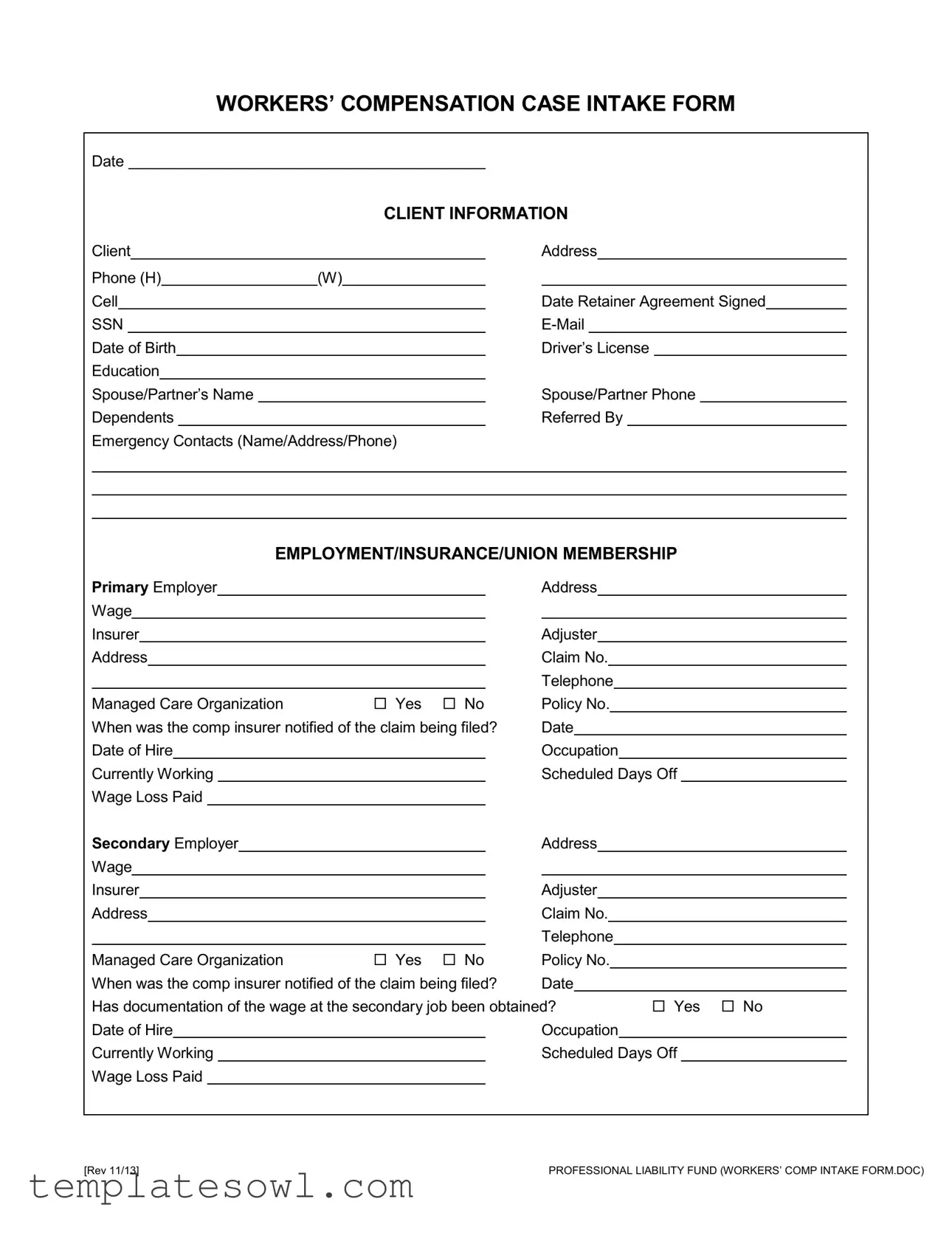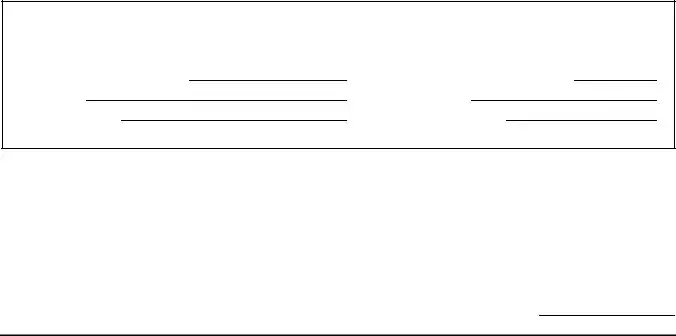What is the purpose of the Workers Compensation Intake form?
The Workers Compensation Intake form is designed to gather essential information from clients who are filing a workers' compensation claim. This comprehensive document collects details about the client, their employment, the nature of their injury, prior claims, and medical treatments, which helps in assessing the claim effectively. Having accurate information is crucial for the processes that follow after a claim is filed.
What kind of information is needed from clients on the form?
Clients are required to fill in personal details such as their name, address, phone numbers, date of birth, and social security number. Additionally, the form requests information about their employment, including the employer's name, address, wage, and the circumstances surrounding the injury. Relevant medical history and prior claims are also included to provide a complete overview of the client's situation.
How should clients report their injury details?
Clients must provide specific information about the injury. This includes the date and location of the injury, the body parts affected, and how the injury occurred. Clear articulation of these details ensures that all parties involved have a shared understanding of the incident, which is essential for processing the claim promptly.
What is the significance of employment details on the form?
Employment details play a critical role in workers’ compensation claims. Information about the client's primary and secondary employers, wage details, and how long the client has been employed helps determine the benefits owed to them. Insurers also consider the client's work schedule and any reported wage loss, which are necessary for calculating compensation accurately.
What are the deadlines mentioned in the form?
The intake form includes various deadlines crucial for managing the workers' compensation claims process. For instance, clients must be aware of deadlines for notice of closure, reconsideration orders, and denial notices. These deadlines dictate the timeframes within which clients can respond to decisions made by the workers’ compensation board, impacting their rights to appeal or request further action.
What should clients disclose about previous claims or injuries?
Clients need to disclose any prior workers' compensation claims as well as information regarding other injuries or motor vehicle accidents. Reporting this information is important because it helps assess the current claim in the context of the client’s overall medical history. This transparency can affect both the claim assessment process and the potential benefits awarded.
Why are medical conditions and treatment history important?
Clients are asked to detail any pre-existing medical conditions and their treatment history. This information is essential for understanding how these factors might affect the current injury. Insurers will evaluate whether the injury is solely work-related or whether pre-existing conditions contributed, which could affect compensation outcomes.
What is the role of witnesses in a workers’ compensation claim?
Witnesses can significantly bolster a client's claim. The intake form allows for the collection of witness names and contact information. These individuals may provide testimonies regarding the incident, which can support the client's version of events and strengthen the case during the claims process.
How does the form help in third-party liability claims?
The form includes sections to identify any third parties that may be responsible for the injury. Collecting this information can open avenues for additional compensation if someone other than the employer is liable. Identifying these parties through the intake form ensures that all potential sources of compensation are explored during the claim process.





